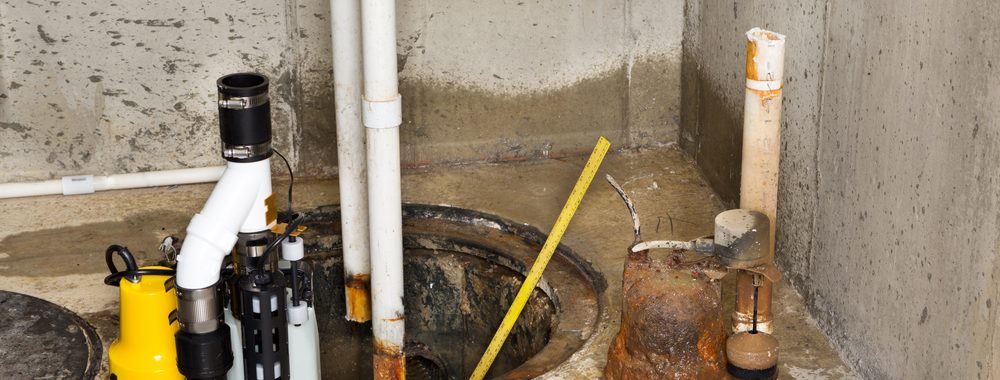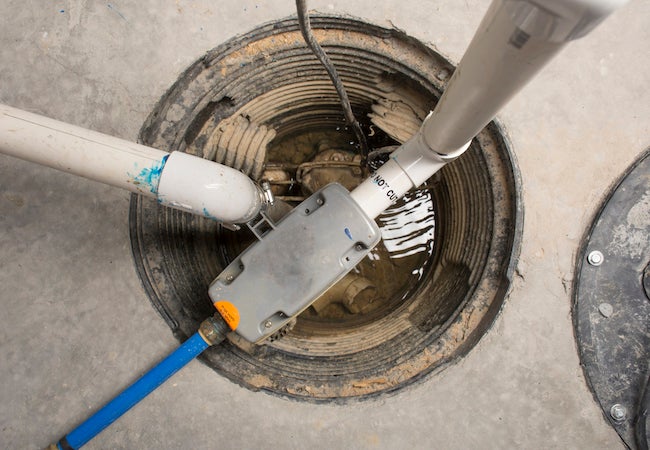Just how do you actually feel about Keep Your Sump Pump Clean, It'll Keep You Dry?

Sump pumps are vital parts in several homes, specifically in locations susceptible to flooding or extreme wetness. They help prevent water damages by successfully eliminating excess water from basements or crawl spaces. However, like any other device, sump pumps need regular upkeep to ensure they function properly when required one of the most. Cleansing your sump pump is an essential part of its maintenance, and understanding how to do it properly can conserve you from expensive repairs and prospective catastrophes.
Introduction
Keeping a clean sump pump is essential for its appropriate performance and durability. Disregarding this vital task can bring about clogs, breakdowns, and ultimately, water damages to your building. Therefore, discovering exactly how to clean up a sump pump is critical for home owners who rely upon these tools to maintain their basements completely dry and safeguarded.
Indications of a Dirty Sump Pump
Understanding when your sump pump requires cleansing is essential for protecting against prospective malfunctions. Some common indicators that indicate an unclean sump pump include weird noises during operation, lowered water circulation, and noticeable particles in the pit. If you observe any of these symptoms, it's important to cleanse your sump pump promptly to prevent any kind of further concerns.
Getting ready for Cleansing
Prior to you begin cleaning your sump pump, it's vital to take some security precautions. Start by shutting down the power to the pump to prevent any electrical crashes. Additionally, use ideal protective gear, such as handwear covers and safety glasses, to protect yourself from dust, debris, and prospective pathogens.
Recognizing the Sump Pump
Before diving into the cleaning procedure, it's important to have a fundamental understanding of just how a sump pump works. Commonly installed in a pit or basin below the basement flooring, a sump pump consists of numerous essential elements, including a pump, a float button, and a discharge pipeline. When water collects in the pit, the float button activates the pump, which after that pumps the water out via the discharge pipeline, far from the building's foundation.
Detailed Overview to Cleaning Up a Sump Pump
Turning off the Power
Begin by separating the power supply to the sump pump to prevent any type of crashes while cleansing.
Checking for Correct Functioning
Before re-installing the pump, execute a quick examination to guarantee that the float button turns on the pump appropriately. Pour some water right into the sump pit and observe the pump's operation. If every little thing is working correctly, you can reassemble the pump and reconnect the power supply.
Getting Rid Of Particles and Dirt
Use a bucket or an inside story to get rid of any type of visible particles, dirt, or sediment from the sump pit. Dispose of the particles correctly to stop it from blocking the pump or the discharge pipeline.
Cleansing the Pump and Float Switch
As soon as the pit is free from particles, carefully get rid of the pump from the pit. Examine the pump and the float button for any kind of signs of damage or wear. Make use of a soft brush or towel to clean the surfaces and eliminate any gathered grime.
Flushing the System
After cleaning the pump and float button, flush the sump pit with clean water to get rid of any type of continuing to be dust or debris. This will aid guarantee that the pump operates efficiently and effectively.
Upkeep Tips to Keep Your Sump Pump Clean
Along with regular cleansing, there are several upkeep ideas you can comply with to maintain your sump pump in optimum condition:
Verdict
Cleaning your sump pump is an essential aspect of its maintenance and ensures that it runs properly when you need it one of the most. By complying with the actions detailed in this guide and including routine maintenance right into your routine, you can extend the life expectancy of your sump pump and protect your home from water damages.
6 STEPS ON HOW TO CLEAN A SUMP PUMP PROPERLY
UNDERSTANDING SUMP PUMPS
Your sump pump plays a crucial role in protecting your home by managing and removing excess water. It primarily functions as a “shield”, guarding your basement against the damaging effects of water accumulation. The pump is housed in a sump pit in the lowest part of your basement, and its job is to pump out any water that collects there.
During heavy rainfalls or when snow melts rapidly, water can infiltrate your basement, posing potential risks like flooding, structural damage, and harmful mold growth. Here, the sump pump springs into action, pumping out the intruding water and directing it away from your home.
SAFETY FIRST
Before cleaning, remember to prioritize safety. Disconnect the sump pump from the power source to prevent any accidental electric shocks. Also, wear sturdy gloves to protect your hands from any sharp or dirty components within the pump.
REMOVE THE SUMP PUMP
After ensuring your safety, the next step is to remove the sump pump from its pit. Doing this might require careful maneuvering as you don’t want to damage any pump components. Once removed, clean the sump pit to remove any accumulated debris or sludge.
INSPECT THE PUMP
Inspect the pump for any visible signs of wear or damage. Check the power cord, float switch, and impeller housing. If any components look worn out or damaged, consider replacing them to ensure optimal performance.
CLEAN THE PUMP
Thoroughly clean the pump with warm, soapy water. Make sure to rid it of any dirt, gravel, or other debris that might impede its performance. You can use a toothbrush to clean the small, hard-to-reach parts of the pump.
REINSTALL THE SUMP PUMP
Reinstall the pump into the sump pit Make sure it’s positioned correctly to remove the water effectively Once it’s back in place, reconnect it to the power source TEST THE PUMP
Finally, pour some water into the pit to ensure the pump works correctly. It should start automatically and begin pumping out the water; if it doesn’t, check the power source and the positioning of the pump.
Remember, while cleaning your sump pump is an essential part of home maintenance, hiring a professional plumber for a thorough inspection and cleaning at least once a year is also important. This will ensure that your pump is in optimal condition, ready to protect your home from potential water damage.
BEST PRACTICES FOR CLEANING SUMP PUMP DISCHARGE PIPES
Regular Inspection: Regularly inspect your discharge pipes, especially during heavy rainfall or snowmelt periods. Look for any signs of blockage or damage. Early detection of problems can prevent serious issues down the line. Periodic Cleaning: Over time, sediment and debris can accumulate in the discharge pipes, impeding the flow of water. Regular cleaning helps keep the pipes clear and functioning efficiently. You can use a high-pressure water jet to effectively clean the pipes. Insulation During Winter: In colder climates, discharge pipes can freeze, blocking the outflow of water. Protect your discharge pipes from freezing temperatures by insulating them with foam pipe insulation. This will ensure the sump pump can continue to discharge water even in freezing conditions. Proper Positioning: The discharge pipe should be positioned to direct water away from your home’s foundation. Improper positioning can lead to water seeping back into the basement. Ensure the pipe is long enough and angled correctly. Installation of a Check Valve: A check valve prevents water from flowing back into your sump pit after the pump has pushed it out. Installing a check valve helps maintain the efficiency of your sump pump and reduces the risk of flooding. Minimize Pipe Turns: Every curve or turn in the discharge pipe can decrease the efficiency of water flow. By minimizing turns and bends in your discharge pipe, you can increase the efficiency of your sump pump. https://www.fullspeedplumbing.com/how-to-clean-a-sump-pump-properly9999/

As a serious person who reads on How To Effectively Clean A Sump Pump, I think sharing that piece of content was a good thing. For those who liked our blog posting plz remember to share it. Many thanks for being here. Come back soon.
Visit My Site